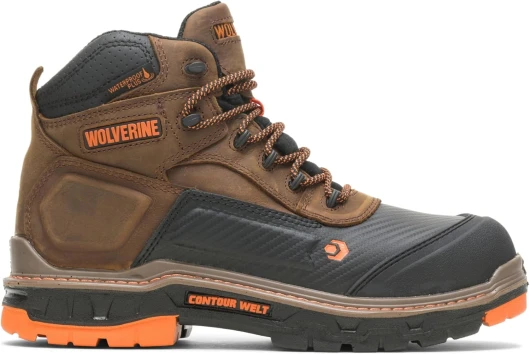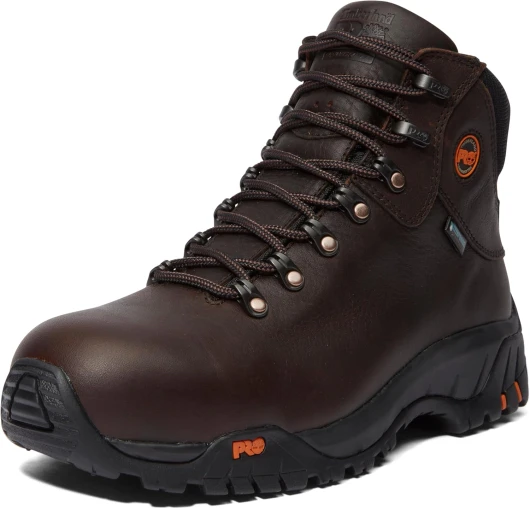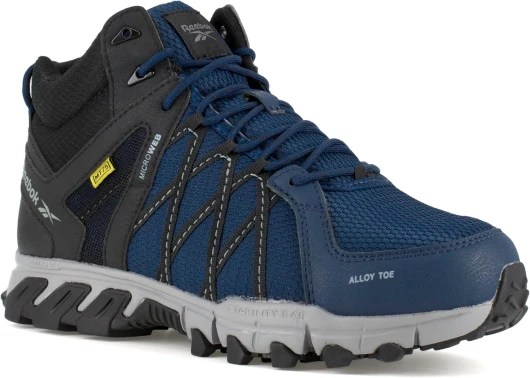
Understanding Alloy Toe Boots
Recognizing the Advantages of Alloy Toe Protection
When it comes to hiking and outdoor activities, selecting the right footwear is crucial for ensuring safety, comfort, and durability. One of the standout features in the realm of hiking boots is the inclusion of alloy toe protection. Alloy toe boots have gained attention for their combination of lightweight materials and reliable safety features. Alloy toes are crafted from a blend of metals, including aluminum, titanium, and others, delivering a robust barrier against potential hazards. This innovative design provides a significant weight reduction compared to traditional steel toe counterparts, offering hikers the benefit of enhanced comfort during long treks without compromising safety. What's more, alloy toes are often incorporated into boots that feature electrical hazard protection, waterproof membranes, and slip-resistant soles. This makes them particularly appealing to hikers venturing into diverse and challenging terrains. Safety is further augmented by puncture-resistant outsoles and slip-resistant properties, which are essential when navigating wet or uneven surfaces. Considering the wide range of choices available for outdoor footwear, it's vital to weigh the benefits and drawbacks of various toe protection options. While alloy toes offer significant advantages, such as being lighter and equally as strong as steel, the decision ultimately depends on individual hiking needs and personal preferences.Why Hikers Should Consider Alloy Toe Boots
Enhanced Protection for Adventure Seekers
Alloy toe boots provide hikers with a level of protection that's essential for tackling challenging terrains. These boots integrate safety features commonly found in work environments, such as a safety toe that guards against impact and compression. Unlike steel alternatives, alloy toes offer a lighter experience without sacrificing durability, making them a favored choice for long treks where weight matters.Balancing Comfort and Safety
When it comes to toe work and exploring rugged paths, comfort is just as crucial as protection. Alloy toe boots distinguish themselves with their ability to provide the balance of a lightweight boot with solid safety features. These boots often come with slip resistant and puncture resistant soles, adding an extra layer of security against potential hazards like uneven surfaces or sharp objects.Withstanding the Elements
Whether you're battling electrical hazard zones or simply facing the unpredictability of nature, choosing the right materials for your boots is key. Alloy toe options often feature waterproof materials, ensuring your feet stay dry during unexpected downpours or when crossing creeks. Additionally, these boots are often designed to be slip resistant, providing stability in wet conditions.Style Meets Functionality
For those concerned with style, alloy toe boots are available in a variety of designs suitable for both men and women. From the rugged aesthetic of a western work boot to the sleek lines of a waterproof safety boot, there's a pair for every taste. Plus, with so many available on sale, they offer a great opportunity to blend style with practicality at an attractive price point. In evaluating your footwear options, consider the best composite toe shoes for all-day comfort as a comparable choice. This can provide further insights into the nuances between alloy and other materials, helping you make an informed decision tailored to your hiking needs.Comparing Alloy Toe Boots to Steel and Composite Options
Exploring Alloy vs. Other Safety Toe Options
When deciding on the right safety toe footwear for hiking, it's essential to weigh the benefits of alloy toe boots against other options like steel and composite toe boots. Each type has its unique advantages and potential drawbacks, so let's dive into what sets them apart.
Lightweight Advantage: Alloy toe boots stand out by offering a lighter weight without compromising on strength. This is particularly beneficial on long hikes where every extra ounce can feel like a burden. The lighter design allows both men and women hikers to navigate trail obstacles with ease, maintaining a comfortable pace throughout their journey.
Strength and Durability: While steel toe boots have long been the go-to for ultimate protection, alloys offer a comparable level of safety, suitable for most hiking hazards. They also resist compression and impact effectively, making them a practical choice for those encountering electrical hazards or rocky terrains.
Weather Readiness: In terms of weather resistance, alloy toes often come incorporated in waterproof work boots. This ensures dry feet during unexpected rain – a significant plus when traversing through wet environments or springtime trails. Slip-resistant soles add another layer of security, reducing the risk of falls on slick surfaces.
Cost Considerations: From a price perspective, steel toe options can be more costly due to their heavier materials. Alloy toe options come at a relatively moderate sale price, providing hikers with an affordable alternative that doesn't skimp on essential features like puncture resistance and electrical safety standards.
Style and Versatility: Hikers keen on style will appreciate the diverse array of designs, including western work boots and urban looks, that alloy toe boots come in. This versatility ensures you can find a pair that suits both practical needs and personal fashion preferences.
Ultimately, the choice between alloy, steel, and composite toe boots depends on your specific hiking needs. Consider factors such as comfort, weight, durability, and price to assess what fits you best before making a purchase. For more detailed insight on choosing the right hiking gear, check out this comprehensive guide on selecting the best apparel for hiking in summer.
Choosing the Right Alloy Toe Boots for Your Hiking Needs
The Art of Selecting Alloy Toe Boots for Trail Explorers
Selecting the perfect alloy toe boot tailored for hiking needs can be likened to a blend of science and personal preference. Whether you're navigating rugged terrain or traversing electrical hazard areas, finding a boot that seamlessly integrates functionality, comfort, and style is crucial.
Firstly, understanding the activity terrain and potential hazards is the foundation. For those frequently dealing with damp environments or unpredictable weather, waterproof work boots may be a priority. These boots ensure that your feet stay dry, immensely improving the hiking experience. Alloy toe boots, compared to their steel counterparts, offer a lighter yet equally secure alternative, enhancing comfort over extended treks.
Pay keen attention to the materials and technology employed in the boots. A boot that boasts features such as slip-resistant and puncture-resistant soles can offer added safety and stability, reducing slips and falls. Protection doesn't end there; boots with electrical hazard protection can be invaluable when traversing areas with potential electrical risks.
Stylistically, it's essential to feel confident in your gear. Options range from the rugged aesthetic of western work boots to more minimalist styles, allowing hikers to express their individual taste while enjoying all the protective benefits.
The price range for alloy toe boots varies based on brand, features, and specific technologies. Even with budget considerations, never overlook crucial features such as waterproofing or slip resistance that could impact your safety and comfort on perilous paths.
Exploring sales or shop offers can lead to great deals, but it’s essential to ensure the boot’s features align with your personal hiking needs. Whether for men or women, a well-considered purchase will pay dividends in both safety and hiking enjoyment.
Caring for Your Alloy Toe Boots
Maintaining Your Alloy Toe Boots: Essential Care Tips
Proper care and maintenance for your alloy toe boots are crucial to ensure they remain durable, comfortable, and effective at providing safety during hikes. Here are some key tips for taking care of your boots:- Regular Cleaning: After each hike, clean your boots to remove dirt, mud, and debris. Use a soft brush and mild soap with water for stubborn spots. This helps maintain both their waterproof qualities and the integrity of materials.
- Proper Drying: Always let your boots air dry after a wash or a wet hike. Avoid direct heat sources as they can cause the material to crack or warp. Stuffing the boots with newspaper can help absorb moisture quickly.
- Leather Conditioning: For leather alloy toe boots, it's important to apply a leather conditioner regularly to keep the material supple and prevent it from drying out and cracking.
- Inspect for Damage: Regularly inspect your boots for any signs of wear, such as damage to the safety toe, cracks in the sole, or compromised waterproofing. Address any issues promptly to prevent further damage.
- Store Safely: When not in use, store your boots in a cool, dry place. Keep them upright and avoid stacking heavy objects on top of them to maintain their shape.


















